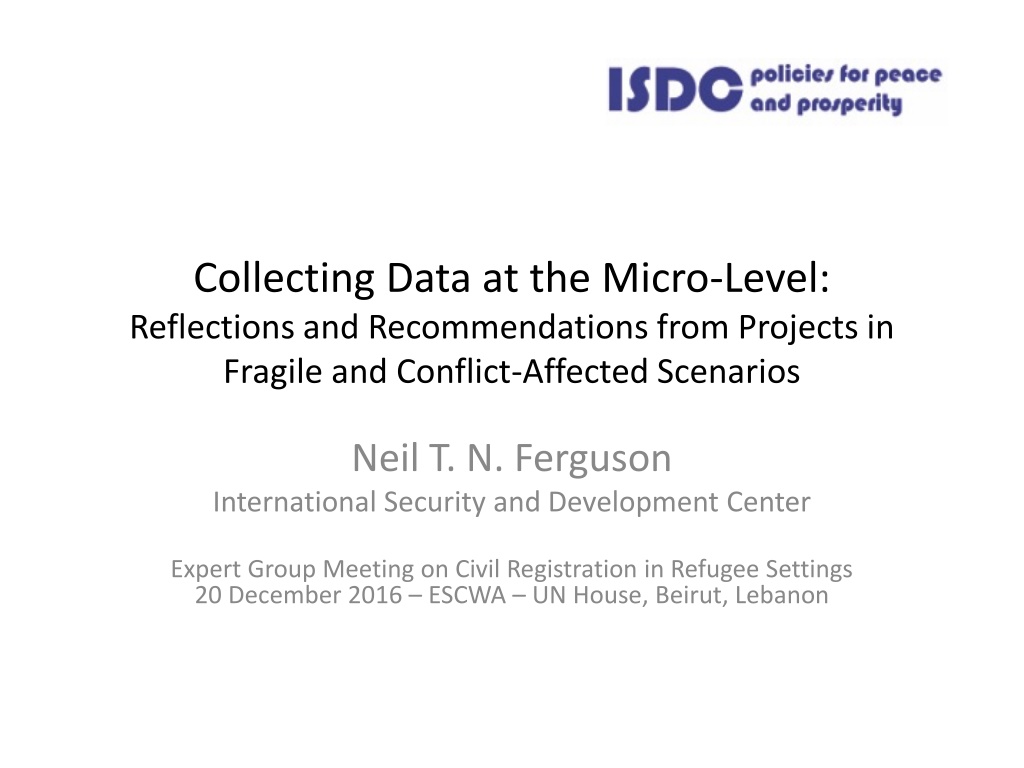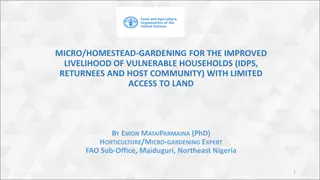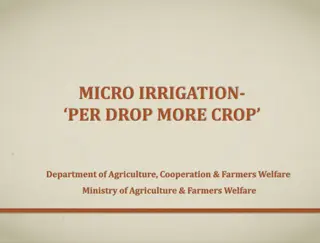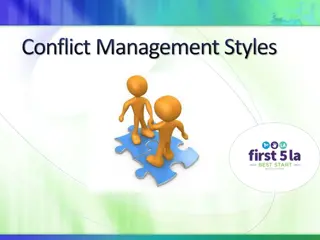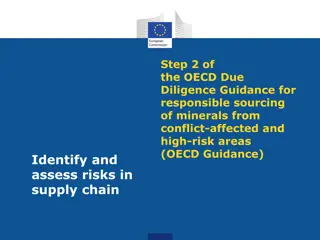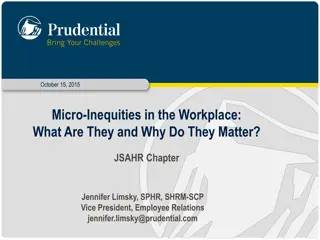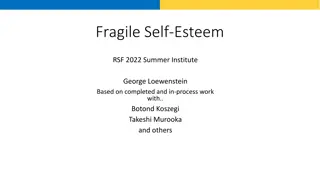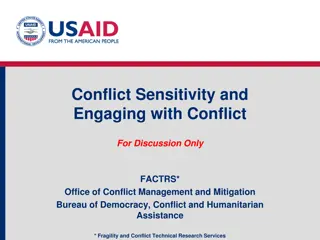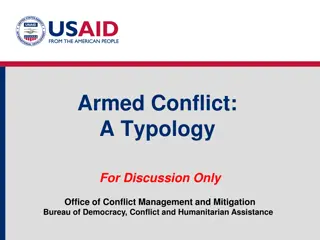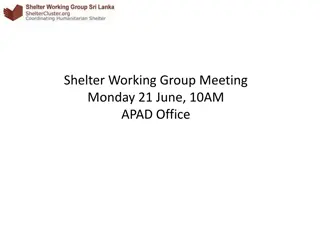Micro-Level Data Collection in Fragile and Conflict-Affected Scenarios
Reflecting on the importance of collecting data at the micro-level in fragile and conflict-affected areas, this presentation discusses case studies from Kenya and Niger, emphasizing the need for detailed information to understand complex phenomena like conflict, fragility, and displacement. Through behavioral games and surveys, researchers delve into individual experiences to uncover nuanced insights that traditional datasets might overlook. Lessons learned stress the value of fine-grained data for informing interventions and policies in such challenging environments.
Download Presentation

Please find below an Image/Link to download the presentation.
The content on the website is provided AS IS for your information and personal use only. It may not be sold, licensed, or shared on other websites without obtaining consent from the author. Download presentation by click this link. If you encounter any issues during the download, it is possible that the publisher has removed the file from their server.
E N D
Presentation Transcript
Collecting Data at the Micro-Level: Reflections and Recommendations from Projects in Fragile and Conflict-Affected Scenarios Neil T. N. Ferguson International Security and Development Center Expert Group Meeting on Civil Registration in Refugee Settings 20 December 2016 ESCWA UN House, Beirut, Lebanon
Outline Introduction: Why Collect Data at the Micro- Level Case-studies: 1. Behavioural games in Kenya 2. Survey data on nutrition in Niger 3. The Fragility Module Lessons Learned and Conclusions
Introduction Why measure at the micro-level? An example from our work on conflict and fragility: Historical focus on states of conflict Early data sets (e.g. PRIO/UCDP): binary information on whether a country was at war or not in a given year Lack of fine-grained information and susceptibility to thresholds More recent focus on extent of conflict ACLED geo-coded event count data for Africa and Asia Ushahidi crowd-sourced event counts These approaches enforce a critical assumption on researchers: Everyone in a given area experiences conflict in the same way Same logic can be used to understand array of other / related phenomena: e.g. exposure to fragility, displacement
Introduction How to measure conflict at the micro-level? Panel household surveys (Justino et al., 2013) Collects a range of socio-demographic data from representative group of individuals over time Augmented with conflict module questions on private experiences relating to conflict E.g. personal / familial victimisation; presence of armed groups; fear of violence Behavioural experiments (Bauer et al., 2013) Collects data on how individuals behave in a range of hypothetical scenarios Can prime along in-group and out-group lines e.g. testing the role of ethnicity in behaviour or on exposure to conflict e.g. does exposure to, or experience of, conflict lead to changes in behaviour?
Case Study 1: Behavioural Games in Kenya Purpose: 1. To understand if exposure (regional and personal) to electoral violence affects economic decision-making 2. To understand if response to conflict different along in- group or out-group lines Results: 1. Those exposed to conflict exhibit (surprisingly) different behaviour: expect better of others and reciprocate more 2. No apparent differences across in-group or out-group partners
Case Study 1: Approach: Three games played Elicited behaviour and expectations Survey conducted about experience of risky behav- iours Data collected in: Multi-ethnic regions in Nairobi Mono-ethnic areas near Kisumu
Case Study 1: Approach: Data collected from 654 individuals All men 432 in Nairobi 212 in Kisumu Data collected from two tribes: 273 Kikuyu 381 Luo
Case Study 1: Reflections: 1. Differing responses between those exposed and not exposed to conflict show importance of collecting behavioural data 2. Private experience has an impact over and above aggregate (neighbourhood) experience 3. Significant difficulties in collecting certain forms of data Few individuals admit engagement in risky behaviours 4. Certain level of abstraction remains, although not just in our case
Case Study 2: Nutrition in Niger: Purpose: 1. To understand the effectiveness of WFP programmes in non-ideal type circumstances 2. To understand presence of / extent of synergies between different programming modalities Outcomes: 1. Research presently on-going 2. Endline survey data collected
Case Study 2: Approach: Two waves of survey data Wave 1: WFP Baseline (2014) Wave 2: Joint WFP-ISDC Endline (2016) Both waves collected by Niger national statistics agency (INS)
Case Study 2: Approach: Wave 1: Random, stratified sample of very poor households Representative at national level; and at agricultural zone level Although noted difficulty of ensuring representation in unstable / mobile pops Data from 5,921 HH in all regions of Niger
Case Study 2: Approach: Wave 2: Attempted full resampling of baseline data Inclusion of retrospective questions on experience of shocks Expected attrition: c. 10% Actual attrition: c. 50% Why? Deteriorating security situat- ion in Diffa (no HH visited) Enumeration team attacked and robbed in Tillaberi but attrition still problematic in the rest of the country
Case Study 2: Reflections: 1. Questions arise about certainty of representativeness of the first wave, given fluid, unstable population Panel data collection remains complicated in fluid security situations tracking systems need to be in place from baseline, especially for those fleeing violence Security of enumeration teams operating in conflict-affected or fragile countries should never be taken for granted Despite large loss of data, sample remains usable at some levels - e.g. agro-pastoral regions and useful for analysis but usefulness should never be assumed at the outset Particularly with major events and long but non-specific timelines, retrospective questions garner usable responses but must be carefully considered Significant data collected by project partners (WFP) that could be useful but has not been collated a cautionary tale for future effort 2. 3. 4. 5. 6.
Case Study 3: The Fragility Module Purpose: 1. To assess the notion that fragility can (or even should) be measured at the individual rather than national level 2. To test how experience of fragility varies over sub-national regions, gender, or other classifications Results: 1. We find significant variation in exposure to and experience of fragility across groups in Liberia 2. We find a general reduction in individual experience of fragility in Liberia over time
Case Study 3: Approach: Creation of operationalisable definition of fragility that moves away from common state-centric approach Generation of a series of survey questions that measure individual exposure to a range of phenomena linked to this definition Creation of off-the-shelf fragility module, based on these questions, to be inserted in ongoing panel household surveys Data collection from two household surveys on-going: HORTINLEA Survey in rural Kenya Life in Kyrgyzstan Study Survey Use of sub-set of questions currently asked in Afro-Barometer
Case Study 3: Reflections: 1. Fragility is, in all likelihood, something that is experienced at the individual or household level and therefore requires data collected at this level 2. Collecting such data appears to be possible, yet both of our sample countries are not currently considered fragile even if areas within them are 3. Careful selection of our sample countries and surveys as proof of concept broadening this data collection effort is not a trivial matter 4. Consequently, collecting data in more fragile countries may suffer some of the same issues as our efforts in Niger
Conclusions Given the wide-array of research results derived from using micro-level data in FCS, the need for further work and further data is clear Collecting said data, however, is not a trivial matter FCS are highly fluid and complex scenarios and require data collection strategies to match There are also very real dangers in collecting these data in FCS scenarios Such data, however, is an invaluable research tool and the risks and benefits therefore must be weighed up
Lessons Learned 1. There is no single best fit method for data collection at the micro-level in FCS: Behavioural games provide only abstract links to the real world and real world conflicts Panel surveys, however, require complex (and expensive) strategies to ensure manageable attrition Both, however, offer significantly more insight than country-level and pan-national approaches Collection of such data can be difficult in challenging environments: Sample attrition and physical danger are both real and present concerns, as our experiences have shown Security concerns must be weighed up before collection is undertaken but there may also be scope for novel approaches, such as crowd-seeding or crowd-sourcing Innovative follow-up strategies are also needed in situations where populations are highly mobile or where the risk of displacement is high Displacement is a major concern: not only does it cause attrition but because urgent need remains to understand what happens to displaced populations Retrospective questioning appears to be possible but is not without its risks: increases in accuracy of desired information come with cost of decreased accuracy of recall Collection of these data provides unprecedented opportunity to understand the causes of and impacts of conflict, fragility, displacement, etc. 2. 3. 4.
neil.ferguson@isd-center.org International Security and Development Center Friedrich Str. 246 10969, Berlin Germany info@isd-center.org
